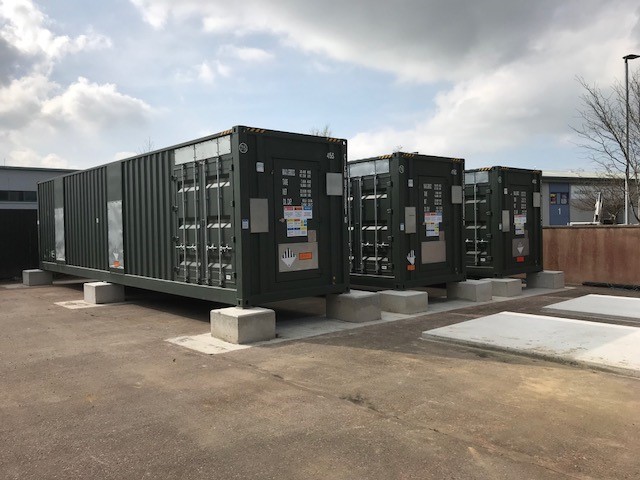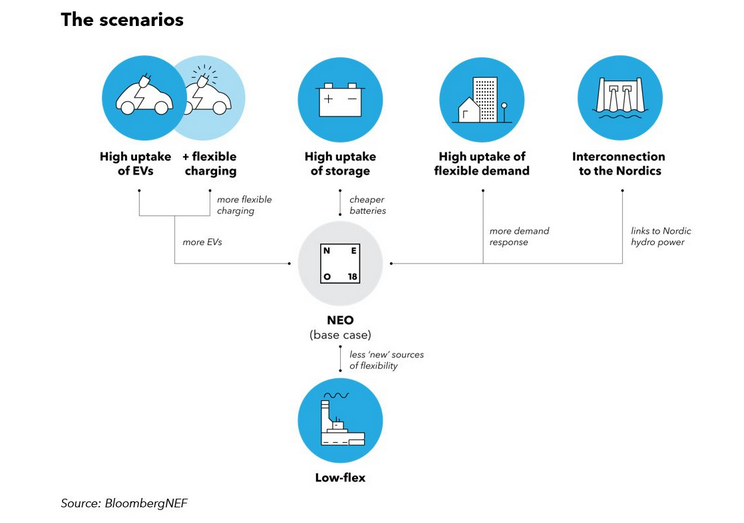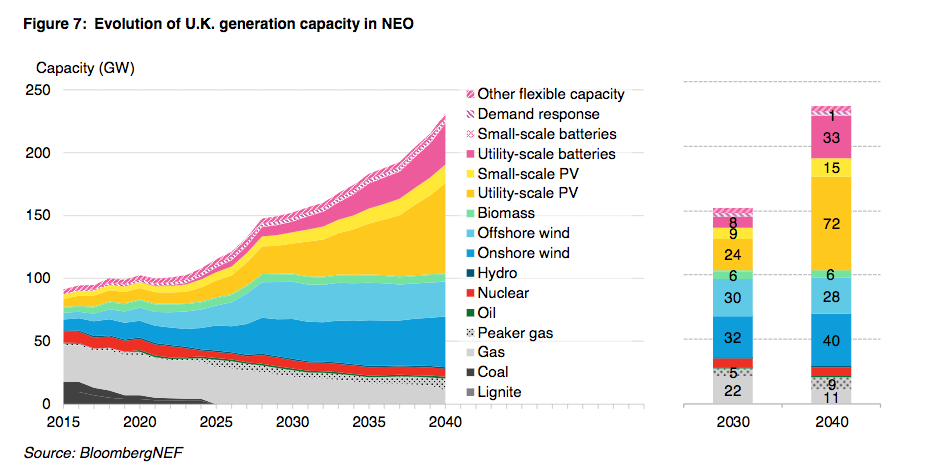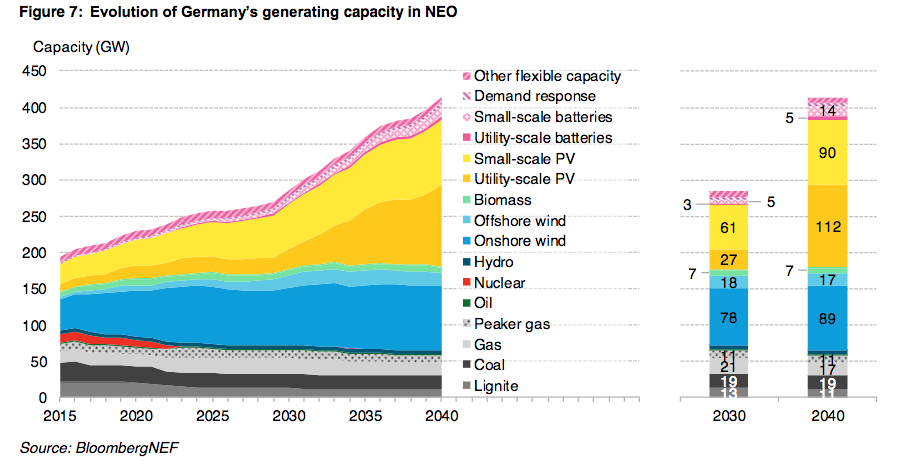Germany and the United Kingdom could make their respective energy systems cleaner and more flexible by increasing their efforts to support energy storage and electromobility, while also improving dispatchable demand response and their interconnection with hydropower plants in Nordic countries.
These are the main conclusions of two new reports published by BloombergNEF in partnership with U.S.-based power management company Eaton and Norwegian energy provider and hydropower specialist Statkraft, which encourage the two governments to accelerate the adoption of more favorable policies for these key technologies.
The deployment of more storage and electric vehicle (EV) recharging stations will provide more flexibility, as it facilitates a shift to large volumes of renewable energy during high demand periods, or moves demand to periods of high renewable generation. Dispatchable demand response would also reduce reliance on fossil-fired back up power plants, while a stronger interconnection with hydropower plants located in Nordic countries would help both the United Kingdom and Germany better manage periods of excess supply and excess demand.
As for the report on the United Kingdom, BloombergNEF said that if actions to increase clean flexibility are not taken, its power system may become oversized and wasteful by 2030, making it 13% more expensive by 2040, with 36% higher emissions. If more storage is deployed, however, emissions could see a 13% reduction by 2030, while the needed fossil backup capacity would drop by 12%. Moreover, although the U.K. power system is said to be able to comfortably integrate electromobility, local distribution networks are likely to face challenges.
In the report on Germany, BloombergNEF said that adding flexibility supports coal through 2030, even as renewables continue to grow. “To decarbonize, Germany needs to address existing coal generation while investing in renewables, flexibility and interconnection,” the report notes.
Popular content
“There is now little doubt that renewable energy will be the dominant force in the power sector for decades to come. The next challenge is to make sure these sources are complemented by clean forms of flexibility – storage, demand and interconnection – to deliver cheaper, deeper decarbonization,” said Albert Cheung, head of global analysis at BloombergNEF.
Integration
According to the “Ten-Year Network Development Plan 2016”, released by the association of European Network of Transmission System Operators (TSOs) ENTSO-E in December 2017, power flows will cross Europe at larger distances, mostly North-South, driven by renewables. Mid- to long-term grid investments will also lead to a reduction of over 40% in terms of the number of congestion hours, compared to current levels.
The report notes that investments worth €150 billion, including €80 billion for projects already endorsed in national plans, are planned by 2030, and that most of these are linked to renewable energy integration development.
In the most optimistic of the four scenarios provided by ENTSO-E, the so-called “European Green Revolution,” smart meters and smart grids will be fully deployed and demand response will have a strong uptake in the next decade. In this vision, no technology receives specific support, and all generation sources compete with each other purely on a market basis. This scenario also forecasts that both new and old nuclear power plants will be unfit to balance the demand.
This content is protected by copyright and may not be reused. If you want to cooperate with us and would like to reuse some of our content, please contact: editors@pv-magazine.com.






3 comments
By submitting this form you agree to pv magazine using your data for the purposes of publishing your comment.
Your personal data will only be disclosed or otherwise transmitted to third parties for the purposes of spam filtering or if this is necessary for technical maintenance of the website. Any other transfer to third parties will not take place unless this is justified on the basis of applicable data protection regulations or if pv magazine is legally obliged to do so.
You may revoke this consent at any time with effect for the future, in which case your personal data will be deleted immediately. Otherwise, your data will be deleted if pv magazine has processed your request or the purpose of data storage is fulfilled.
Further information on data privacy can be found in our Data Protection Policy.